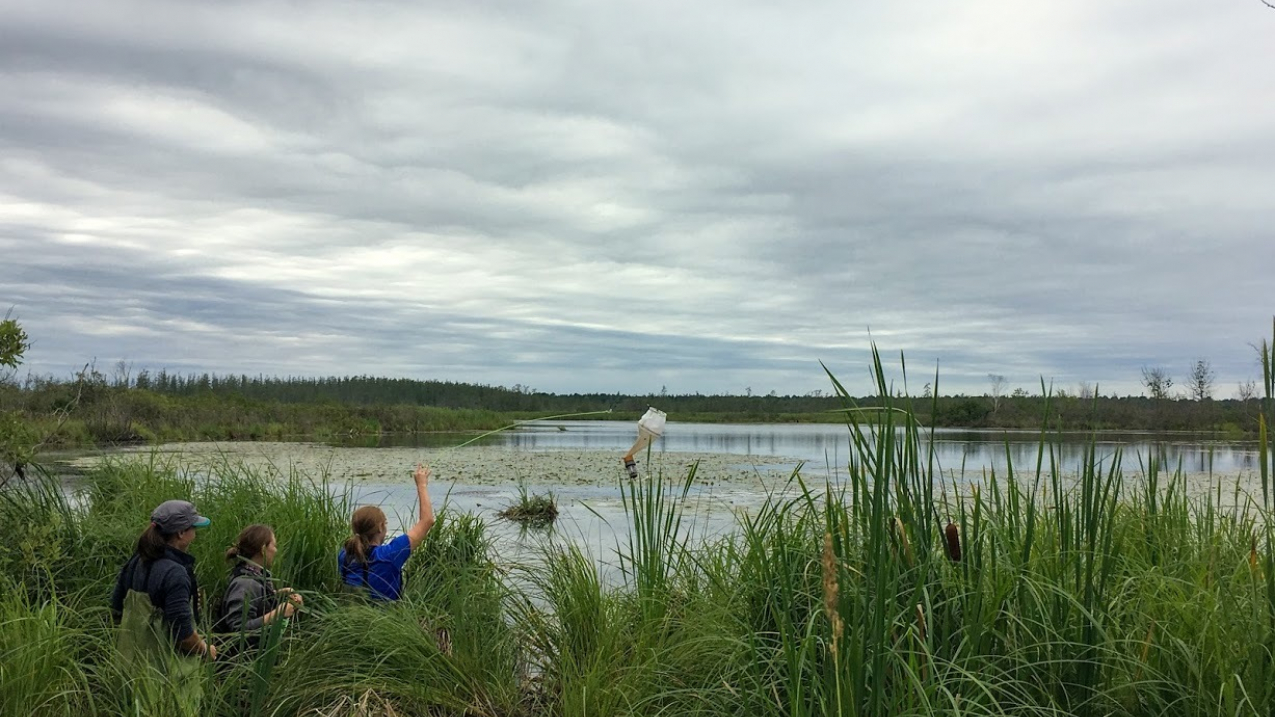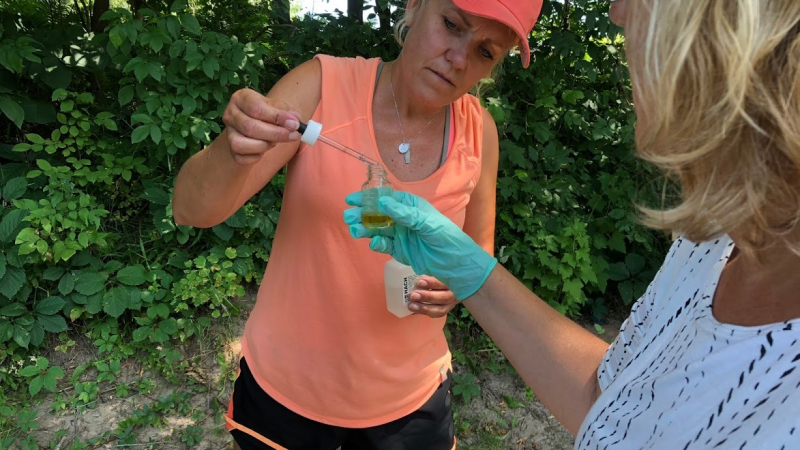For the past six summers, teams of teachers have met in Superior, Wisconsin, to kick off a week of watershed exploration. From tracking lake sturgeon and sampling cyanobacteria to monitoring water quality, they were immersed in the science and conservation of Lake Superior, the town’s namesake and the largest surface of freshwater in the world.

During the 2018 Rivers2Lake Summer Institute, Superior Middle School life science teacher Valerie Poynter (left) and Carlton High School biology teacher Katherine Nistler (right), accompanied by University of Minnesota, Duluth, Ph.D. student Kait Reinl (center), perform a plankton tow in the Bibon Slough in Port Wing, Wisconsin. (Image credit: Lake Superior National Estuarine Research Reserve)
Educators left the Rivers2Lake offsite link Summer Institute energized to share local, hands-on science experiences with their students, but back in the classroom, the realities of the busy school year set in. “I was overwhelmed when I left the institute,” said one teacher. “I loved everything I was exposed to, … but I was intimidated because I knew I had a scope and sequence back in my classroom and didn’t know how to make what I learned at the institute fit.”
Deanna Erickson, education coordinator at the Lake Superior National Estuarine Research Reserve offsite link, was determined to find a better way to support teachers. She knew she had a successful program on her hands. Before Rivers2Lake, there was extensive scientific research taking place in the community, but little connection to local schools. Rivers2Lake filled that gap in 2012, supported over the years by NOAA’s Great Lakes B-WET (Bay Watershed Education and Training) program and Wisconsin Sea Grant offsite link. But it was clear that the program would need to go further to make sure that students gained the full benefit of their teachers’ participation in this award-winning experience.
Looking back at successful education programs she had studied in graduate school, Erickson found the answer: In addition to training 12 educators at a five-day Summer Institute, reserve staff would spend the rest of the school year acting as mentors, connecting classrooms to the scientific community and helping teachers integrate the place-based and outdoor learning they were introduced to over the summer.

Sustained support throughout the school year did the trick. Teachers reported that mentoring helped them navigate barriers and gain confidence with the skills they learned. In the words of one teacher, “It encouraged my perseverance through accountability in the most positive sense of that word. My belief was already there, but mentoring helped keep it at the forefront.”
When teachers are engaged, they are better able to share their passion with their students. To date, 78 teachers in the Lake Superior watershed have participated, and as a result, approximately 2,450 students now have stronger skills in environmental literacy and stewardship. A three-year evaluation of the program, which was recently published in the Journal of Environmental Education, found that students in Rivers2Lake classrooms had levels of academic engagement that were consistently higher than their peers.
In some cases, the benefits of this holistic approach have extended far beyond improving teachers’ comfort level with environmental science. The ongoing support of a mentor increased their sense of confidence, competence, and value as educators. “Truth be told, this program helped restore my passion for teaching,” said Amanda Guttormson, a preschool teacher in Superior, Wisconsin. “I feel that this program has transformed ... the way I stand up for what I believe to be the best practice.”
This story was originally published in the Fiscal Year 2018 NOAA Education Accomplishments Report.



